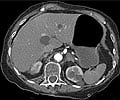Communication between certain parts of the brain is associated with smoking cessation, which could be used for developing cessation strategies.
- Smoking is a hazard to health but many people are unable to stop smoking; a new study has found that poor communication between certain parts of the brain is the reason
- A research team from the Medical University of South Carolina is developing a neurological approach to smoking cessation
- Improving communication between key regions of the brain would help people quit smoking
Inhibition of Automated Control
Automated behavior is blocked or reversed by the brain via the inhibitory control network. This pathway begins in the inferior frontal gyrus on the right and travels to the thalamus through the pre-frontal cortex. The scientists decided to investigate if this pathway was involved in the ability to quit smoking.
The study involved 81 adults who were nicotine addicted and attempted to quit smoking for a period of 10 weeks. Prior to the start of the study, the participants were made to undergo a functional MRI test that was used to monitor brain activity when the participants were made to perform an assignment of inhibitory control. In the assignment, the participants were asked to press a key on the computer keyboard every time specific colored circles were flashed on the computer screen. When circles of certain other colors were shown on screen, the participants should refrain from pressing the key. The study findings showed that
- There was an increased Blood Oxygenation Level-Dependent (BOLD) response in the inhibitory control circuit.
- This showed there was added effort and resources involved in preventing the automatic response of pressing the key during the rare times when a circle of a certain color was shown on the screen.
- Smokers who had lower BOLD responses in their inhibitory control networks quit smoking after 10 weeks.
- These participants had particularly lower BOLD responses in the right inferior frontal gyrus and right thalamus.
- There were stronger functional responses across the two regions of the brain.
- There were participants who resumed smoking after quitting, and they had scored similar to those who completely quit. These people may have required additional effort to break away from their automated behavior.
Rewarding Inhibition
In order to identify if the same response occurred among smokers who did not commit to quitting, Froeliger decided to pay the smokers to quit for an hour. The same task was carried out among 26 smokers and their BOLD measurements were recorded.There was a small twist that was included in this part of the study. Every participant was given a pack of preferred brand of cigarettes, an ash tray as well as a lighter. For every 6 minutes that the smoker did not smoke, the smoker was paid a dollar; the total study time was one hour. The money was a reward or an incentive that was provided to prevent the smoker from yielding to temptation.
The study results showed that
- When the BOLD responses were low while carrying out the inhibitory control task, the greater the resistance offered by the participant to quit smoking.
- There were greater functional connections in the inhibitory control networks of people who resisted temptation.
Aiding Smoking Cessation
The study aids in understanding the mechanisms that are involved in smoking cessation. The findings of the study will help in providing smokers with the necessary support that would encourage cessation. Froeliger and his team are now trying to identify interventional strategies like therapy and the use of medications which will help improve communication between the various crucial regions of the brain. The difference in the biology between people has been shown to contribute to their ability to quit smoking; understanding the differences and increasing factors that would encourage cessation could play a key role in arresting this addictive behavior. The neurological mechanisms that are important for learning new behaviors and for preventing habits from becoming automatic, like smoking, would provide landmark insights into understanding the complex world of behavioral studies.Nicotine in Cigarettes
Cigarettes stimulate the central nervous system and are found to affect various neurotransmitters like gamma-Aminobutyric acid (GABA), acetylcholine, dopamine, and norepinephrine. There are more than 600 chemicals that have been identified in cigarettes, out of which 100 exert pharmacological effects on the human body. Studies have shown that the nicotine present in cigarettes reaches the brain in 8 seconds after it is inhaled into the lungs. As nicotine resembles acetylcholine, it could act as one and lead to manipulation of muscle movement, respiration, memory and other functions.The current study that has brought to the fore a dependence on strong communications between certain parts of the brain could be used to develop interventional strategies that target this association. This would aid in assisting people to quit smoking and to lead healthier lives.
References:
- Neuroscience and Smoking’s Impact on the Brain - (https://quitday.org/quitting-effects/neuroscience-brain/)
- What Happens When You Quit Smoking? - (https://quitsmokingcommunity.org/how-to-quit-smoking/what-happens-when-you-quit-smoking/)
















